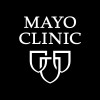
Effect of Dairy Fat on Plasma Phytanic Acid in Human
Coronary Heart DiseaseThe aim of the study is to investigate if cow feeding regimes affects concentration of plasma phytanic acid and risk markers of the metabolic syndrome in human.

Stem Cell Migratory Activity: Prognostic Marker in Myocardial Ischemia
Myocardial InfarctionThe present project aims to determine whether a deficit in migration of stem cells could be implicated in the failure to mount an adequate collateralization after Myocardial Infarction (MI) and thereby facilitate the development of post-ischemic heart failure (HF) and to dissect underlying molecular mechanisms. Furthermore, the investigators wish to determine the predictive value of stem cell migration assay in patients with MI.

Informed Consent for Whole Genome Sequencing: Ideals and Norms Referenced by Early Participants...
Coronary Artery DiseaseProteus Syndrome3 moreSince 2007, the cost of sequencing a diploid human genome has fallen dramatically, from approximately $70 million to $20,000. As affordable sequencing platforms become more widely available, the advancement of biomedical science will draw increasingly on whole genome sequencing research requiring large cohorts of diverse populations. Key policy, ethical and legal implications of these developments will need to be understood in order to promote the efficacy and effectiveness of genomic research going forward. An overall aim of this project is to obtain feedback on the informed consent process from some of the earliest particpants in studies using whole genome sequencing. A more specific goal is to characterize the salient personal and public references accessed by participants around the time of the informed consent process. By highlighting trends in participants views about study participation around the time of the initial informed consent process, we aim to advance the development of an ethically and socially relevant vocabulary with which to negotiate future terms of use for personal sequence data in genomic research. Participants will be asked to complete a one-time, semi-structured telephone interview lasting approximately 45 minutes in the period 2-8 weeks following their initial informed consent session at the NIH. They will be recruited from two NIH protocols employing whole genome sequencing for distinct purposes. They The ClinSeqTM Study is a large-scale medical sequencing project investigating the causal role of genetics in cardiovascular disease enrolling both symptomatic and healthy individuals. The Whole Genome Medical Sequencing for Gene Discovery Study (WGMS) enrolls children and adults for full sequencing with the aim of discovering the genetic etiology of rare conditions.

Assessment of Coronary Plaque Composition Using Optical Coherence Tomography
Coronary AtherosclerosisEndothelial Dysfunction1 moreThe investigator's hypothesis is that local activation of the endogenous Lp-PLA2 plays an integral role in early atherosclerosis, and contributes to the mechanism of coronary endothelial dysfunction and to the structural and mechanical properties that characterize plaque vulnerability. Thus, the investigators study will characterize prospectively the correlation between the functional and structural vascular wall properties, and the activity of the Lp-PLA2 pathway.

PharmacOdynamic compaRison of piTavastatin Versus atOrvastatin on Platelet Reactivity
Coronary Artery DiseaseLevels of platelet reactivity in patients on Dual Antiplatelet Therapy (DAPT) can be influenced by concomitant treatment with medications (i.e. statins) that inhibit the CYP3A4 system involved in the activation of clopidogrel. Atorvastatin and simvastatin are metabolized by CYP3A4. Pitavastatin, unlike other statins, is little metabolized, most of the dose being excreted unchanged in bile, and biotransformation through the cytochrome P450 system is minimal. Indeed, pitavastatin's cyclopropyl group diverts the drug away from metabolism by CYP3A4 and allows only a small amount of clinically insignificant metabolism by CYP2C9. The primary objective of this study is to compare the pharmacodynamic effects of a CYP3A4-metabolized statin (atorvastatin) versus a non-CYP3A4-metabolized statin (pitavastatin) in patients showing high platelet reactivity while on DAPT.

BIOFLOW-III Sweden Satellite Registry
Coronary Artery DiseaseMyocardial IschemiaThis registry is a clinical post-market evaluation of the Orsiro LESS in subjects requiring coronary revascularization with Drug Eluting Stents (DES).

CT Calcium Scoring in Suspected Stable Angina
Coronary DiseasePatients with stable chest pain presenting to general practitioners in UK are routinely referred to the chest pain clinics in the hospitals. They are assessed by clinical history including risk factors, cardiovascular exam, resting ECG, chest x-ray, and exercise ECG. CT calcium scoring (CTCS) is a technique that is very sensitive in identifying and quantifying calcified atherosclerotic plaques. Recent guidance from the National Institute of Clinical Excellence (NICE, citation 1) proposes the use of CTCS in patients with stable chest pain who have low likelihood of coronary artery disease (CAD). They recommend that patients with low likelihood (10-30%) have a CTCS and if the score is 0, they can be considered to have non-cardiac chest pain. However, there is controversy regarding relationship of absent calcification with significant CAD and its prognostic value. At our institution, we have been performing CTCS in this patient cohort since 2003. We plan to retrospectively review the usefulness in CTCS in patients with different likelihood for significant CAD, particularly in patients with absent calcium and compare with the traditional assessment. We also plan to follow-up these patients for any myocardial infarction and death from any cause.

BIOFLOW-III Canada Satellite Registry
Coronary Artery DiseaseMyocardial IschemiaFor the majority of Coronary Artery Disease (CAD), treatment with Percutaneous Transluminal Coronary Angioplasty (PTCA) provides high initial procedural success. However, the medium to long-term complications range from rather immediate elastic recoil or vessel contraction to longer processes like smooth muscle cell proliferation and excessive production of extra cellular matrix, thrombus formation and atherosclerotic changes like restenosis or angiographic re-narrowing. The reported incidence of restenosis after PTCA ranges from 30%-50%. Such rates of recurrence have serious economic consequences. Bare Metal Stents (BMS), designed to address the limitations of PTCA, reduced the angiographic and clinical restenosis rates in de novo lesions compared to PTCA alone and decreased the need for CABG. BMS substantially reduced the incidence of abrupt artery closure, but restenosis still occurred in about 20%-40% of cases, necessitating repeat procedures. The invention of Drug Eluting Stents (DES) significantly improved on the principle of BMS by adding an antiproliferative drug (directly immobilized on the stent surface or released from a polymer matrix), which inhibits neointimal hyperplasia. The introduction of DES greatly reduced the incidence of restenosis and resulted in a better safety profile as compared to BMS with systemic drug administration. These advantages and a lower cost compared to surgical interventions has made DES an attractive option to treat coronary artery disease. This observational registry is designed to investigate and collect clinical evidence for the clinical performance and safety of the Orsiro Drug Eluting Stent System in an all-comers patient population in daily clinical practice.

Post-Market CorPath Registry on the CorPath 200 System in Percutaneous Coronary Interventions
Coronary Artery DiseaseCoronary Disease6 moreTo collect data on the routine patterns of use, safety and effectiveness, including the clinical and technical performance of the CorPath 200 System, in the delivery and manipulation of coronary guidewires and stent/balloon catheters during PCI procedures.

Direct Comparison of 2D Cardiac PET With 3D Cardiac PET
Coronary Artery DiseaseLowering the per-infusion dose of Rb-82 offers advantages of lessening radiation exposure and extending useable generator life. Prior studies have not shown equivalence of 3D vs 2D Rb-82 PET. The investigators therefore compare 3D PET after a lower Rb-82 dose (~20 mCi) processed using a Monte-Carlo driven scatter correction algorithm against conventional higher dosage (~50 mCi) 2D Rb-82 PET MPI.
